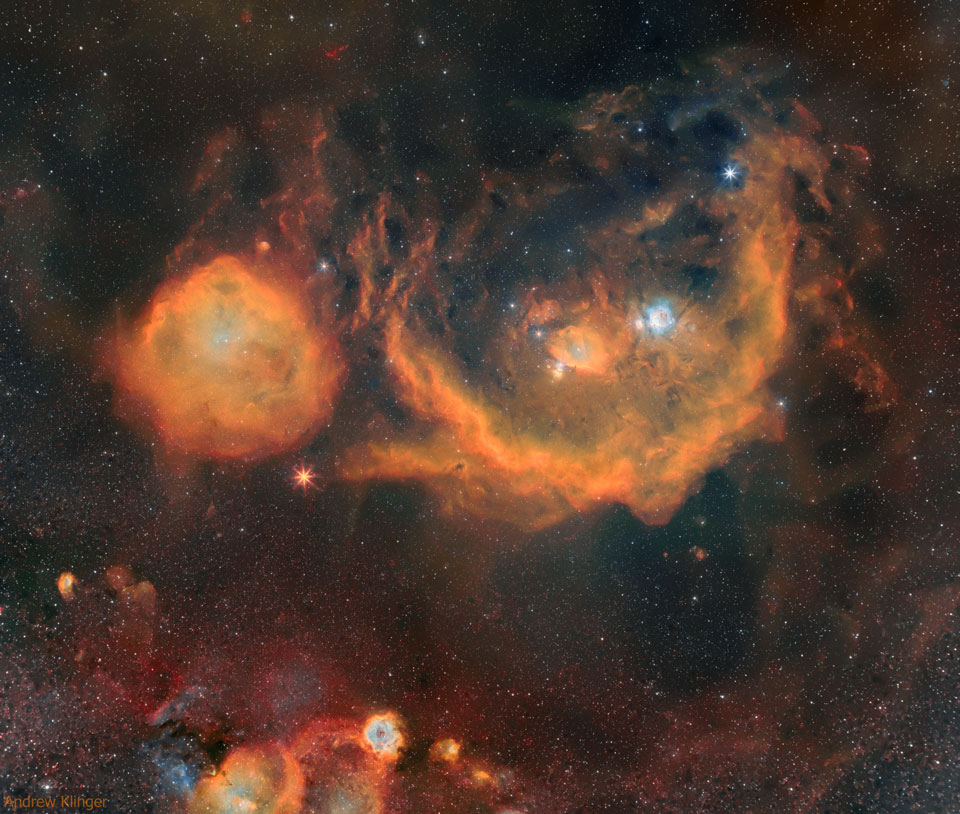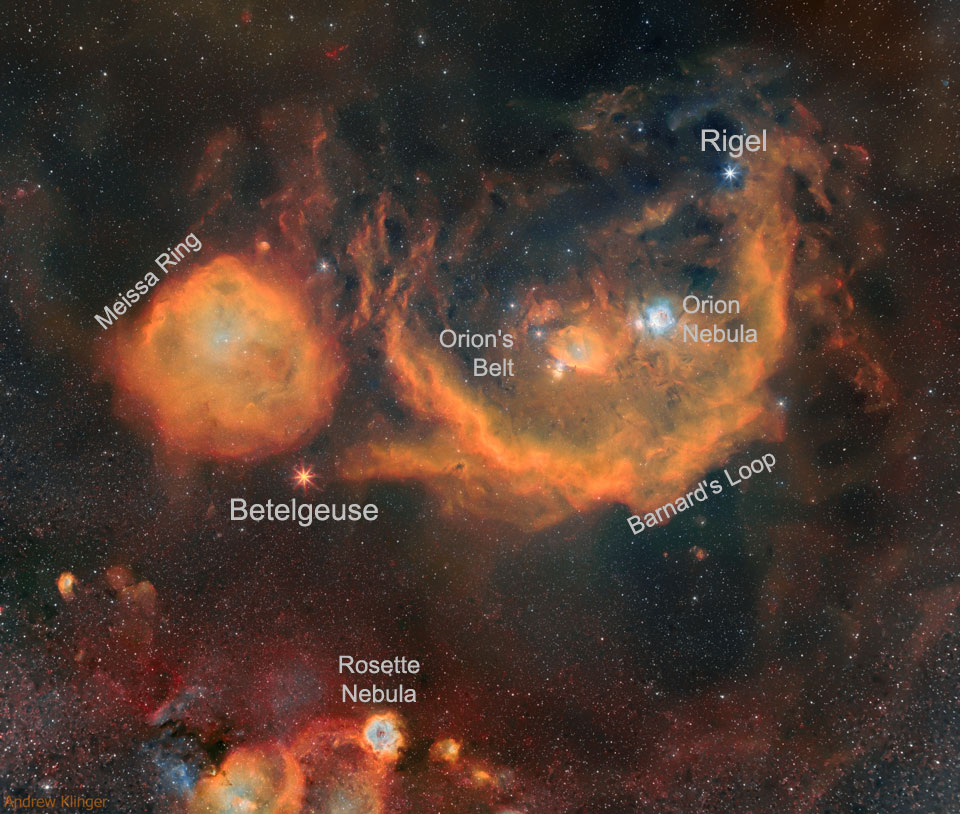猎户座的星际云
2019 June 5
猎户座的星际云
图像来源和版权:Andrew Klinger
说明:猎户座不止是一排三颗星星。这是一个空间方向,富含令人印象深刻的星云。为了更好地欣赏这片众所周知的天空,在一月、二月和三月的几个晴朗夜晚拍摄了一张新的长曝光照片。经过23个小时的拍摄时间和无数小时的图像处理后,这幅由氢、氧和硫组成的特色拼贴画跨越了月球角直径的40多倍。在众多可见的有趣细节中,特别引人注目的是巴纳德环(Barnard’s Loop),即图像中心右侧的亮红色橙色弧。玫瑰星云并不是图片中心左边的巨大橙色星云——它是一个更大但不太为人所知的星云,被称为梅莎环(Meissa Ring)。然而,玫瑰星云是可见的:它是靠近图像底部的明亮的橙色、蓝色和白色星云。在画面中心左边的亮橙色恒星是参宿四(Betelgeuse),而右上角的亮蓝色恒星是参宿七(Rigel)。关于猎户座腰带上那颗著名的三颗星星——在这张繁忙的图片中,很难找到它们,但是有眼力的人会发现它们就在图像中心的右边。
The Interstellar Clouds of Orion
Image Credit & Copyright: Andrew Klinger
Explanation: The constellation of Orion is much more than three stars in a row. It is a direction in space that is rich with impressive nebulas. To better appreciate this well-known swath of sky, a new long exposure image was taken over several clear nights in January, February and March. After 23 hours of camera time and untold hours of image processing, the featured collage in the light of hydrogen, oxygen, and sulfur was produced spanning over 40 times the angular diameter of the Moon. Of the many interesting details that have become visible, one that particularly draws the eye is Barnard’s Loop, the bright red orange arc just to the right of the image center. The Rosette Nebula is not the giant orange nebula just to the left of the image center — that is larger but lesser known nebula known as the Meissa Ring. The Rosette Nebula is visible, though: it is the bright orange, blue and white nebula near the image bottom. The bright orange star just left of the frame center is Betelgeuse, while the bright blue star on the upper right is Rigel. About those famous three stars that cross the belt of Orion the Hunter — in this busy frame they can be hard to locate, but a discerning eye will find them just to the right of the image center.


